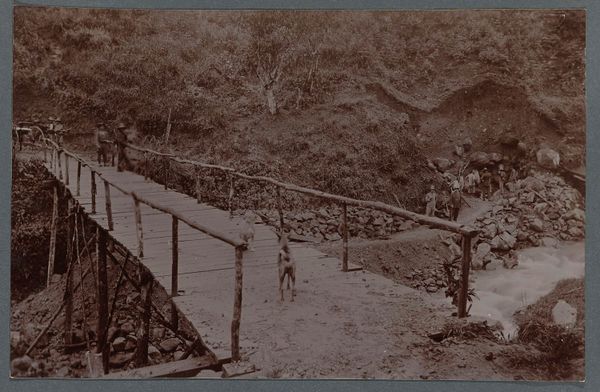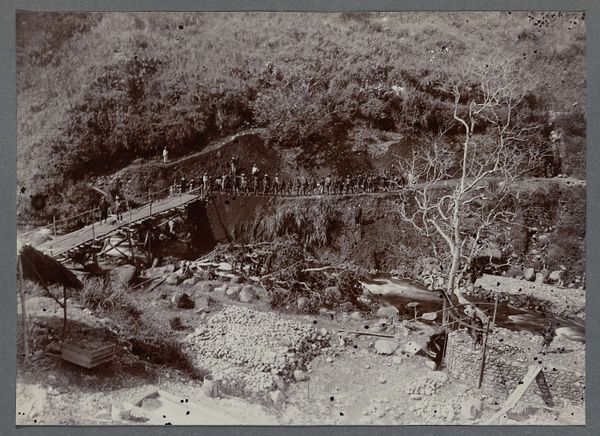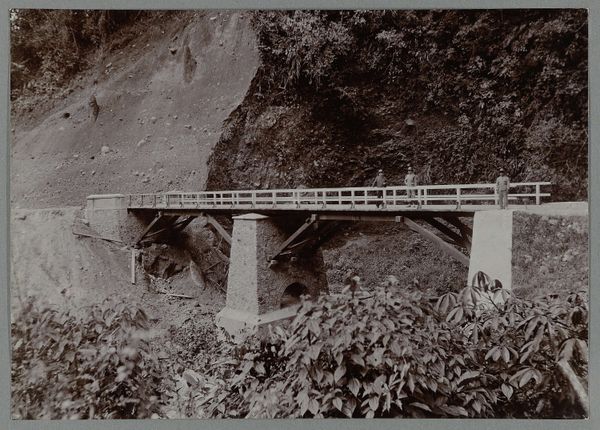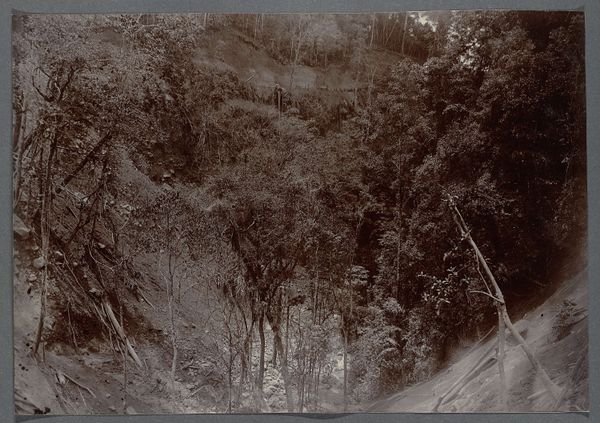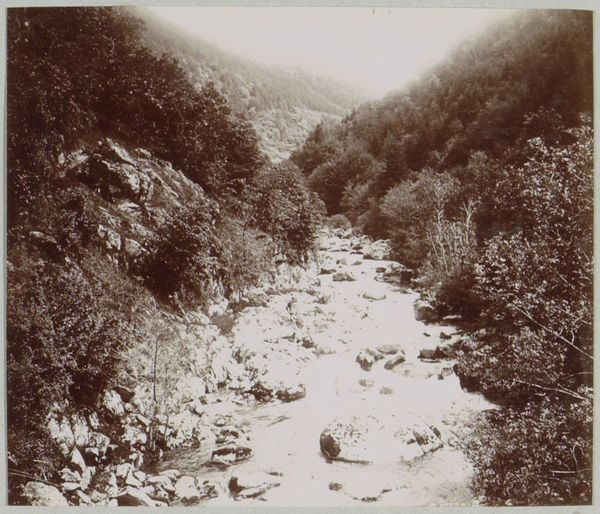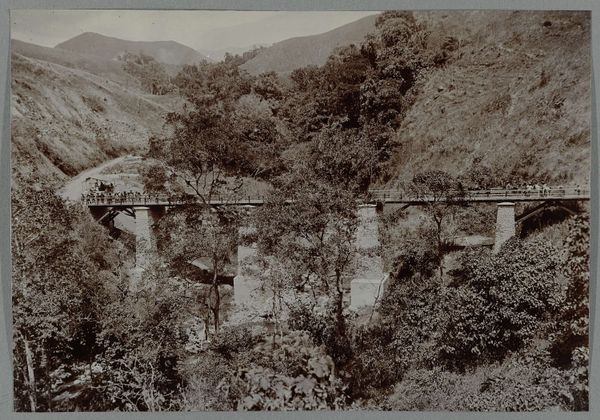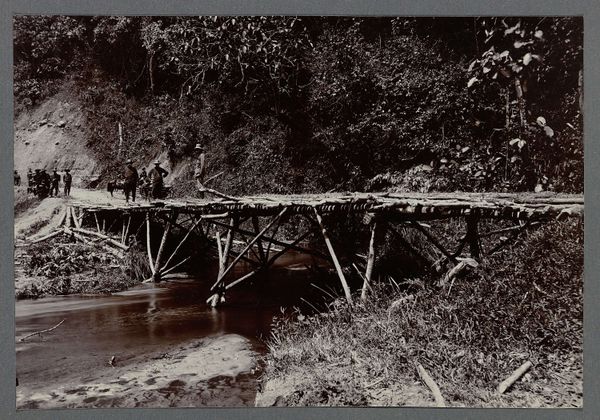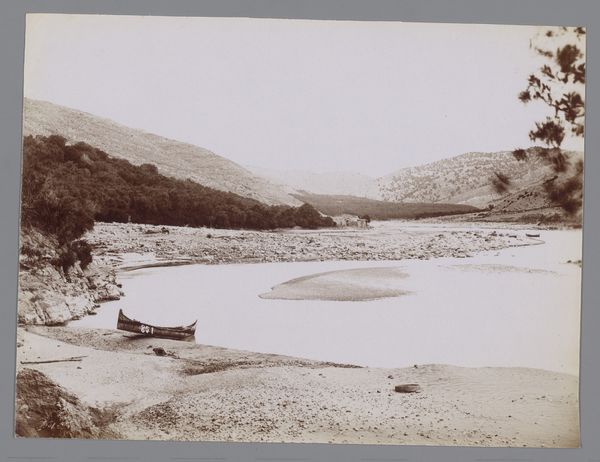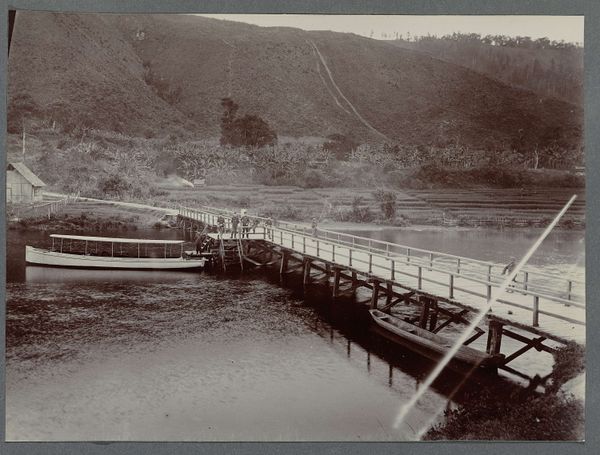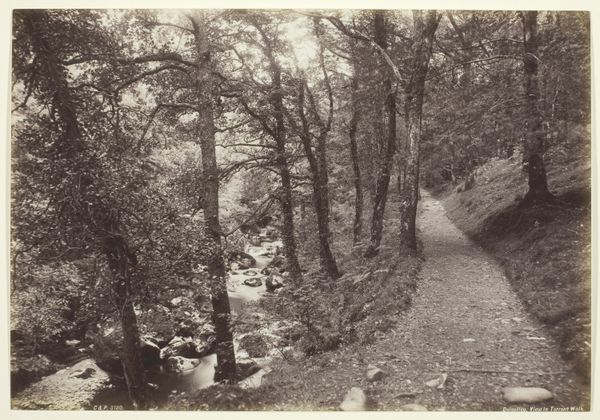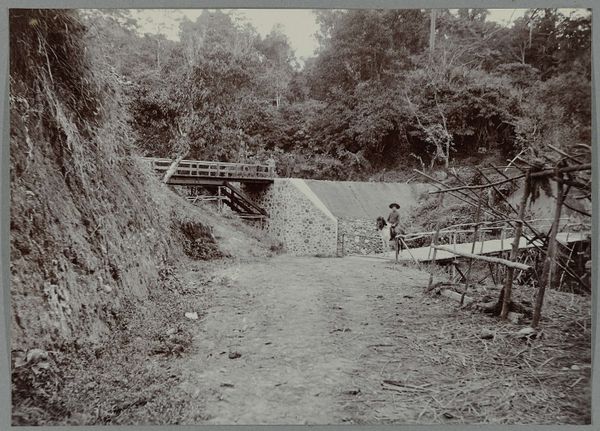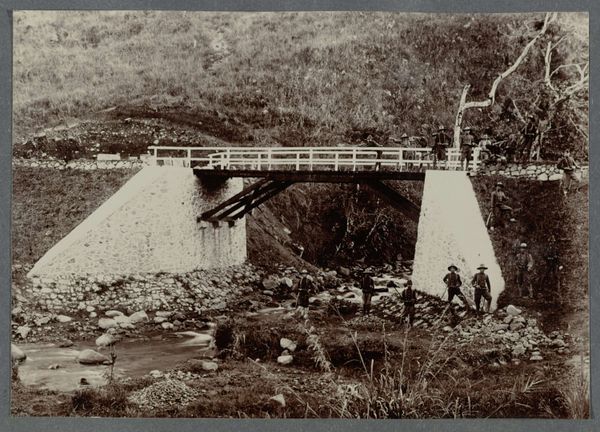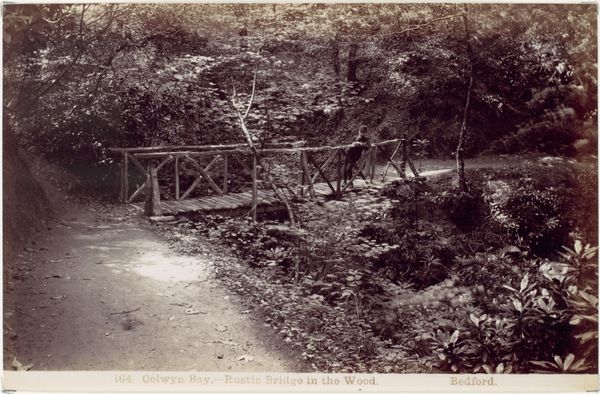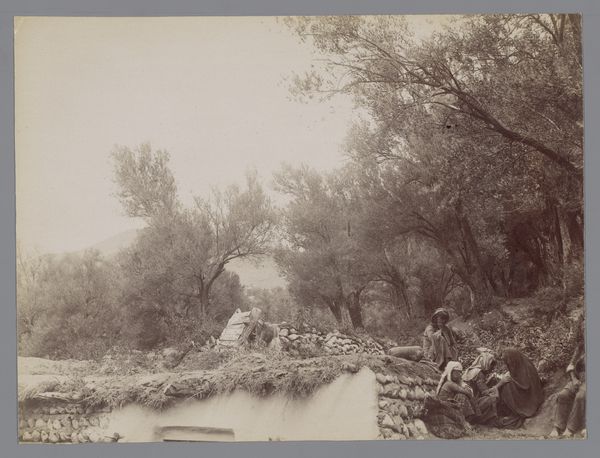
photography, gelatin-silver-print
#
landscape
#
photography
#
group-portraits
#
gelatin-silver-print
#
realism
Dimensions: height 138 mm, width 200 mm
Copyright: Rijks Museum: Open Domain
Curator: This is a photograph titled "Soldaten en arbeiders bij een oude brug," or "Soldiers and Workers at an Old Bridge," taken sometime between 1910 and 1913. The medium is gelatin silver print, offering incredible tonal range. Editor: Immediately I notice the contrast between the dark, overgrown vegetation and the striking, almost ethereal, light reflecting off the water. The people seem almost secondary, consumed by the environment. Curator: Indeed. Observe how the photographer organizes the human figures within the frame. Some traverse the precarious bridge, while others occupy various points along the riverbank and hillside. Consider how this arrangement shapes our understanding of space and depth within the photograph. Editor: To me, the placement of those figures speaks volumes. On the bridge, we have a mixture, suggesting cooperation or even subjugation. But then look at the figures immersed in the river—a very different experience, and likely reflective of vastly different social positions. I wonder who commissioned this piece, and what was its intended audience? The depiction certainly feels staged. Curator: A valuable point. While the photograph presents itself as a slice of life, the careful positioning and attire of the subjects suggests a deliberate construction. Focus on the repetition of form in the architecture. How the shapes of the river stones at the lower right mirror the foliage further up the frame. Editor: But consider also the absence, perhaps intentional, of genuine interaction between these figures. Their disconnection from each other emphasizes, I believe, the deeply ingrained social divisions inherent in such a colonial landscape. The composition thus transcends a mere aesthetic arrangement and reveals broader structures of power. Curator: Power structures certainly are visible within the vertical thrust created by the repetition of line, linking riverbed to bridge to those faint figures on the hillside, which offers the composition significant dynamic energy. It’s that movement through space, enhanced by the tonal contrast, that grips the viewer. Editor: Yes, there are formal qualities to be admired in this anonymous work. Still, I cannot separate the technical mastery from the disquieting portrayal of, in my estimation, a stratified social order under colonial duress. Curator: Thank you, this careful structural and cultural interpretation offers us compelling reasons to look again. Editor: A powerful interplay of visibility and concealment—forcing us to reckon with what we see, and what we cannot know.
Comments
No comments
Be the first to comment and join the conversation on the ultimate creative platform.
